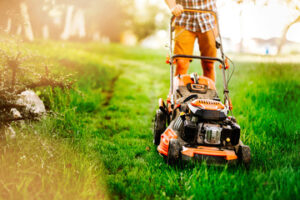Fiberglass is a strong and lightweight material that is used in the bodies of many cars. It can be repaired if damaged, but it requires special attention to detail and the right materials for a durable and professional repair.

The first step is assessing the damage. This involves looking for surface cracks and holes, as well as examining deeper structural issues that may be compromised by the fiberglass patch. Visit https://www.juanitosautobody.com/ to learn more.
Fiberglass is an incredibly versatile material, used to construct everything from home insulation to automobile body panels. This lightweight, durable composite is a popular choice for many cars, and it’s likely that most auto body repair students will see fiberglass spoilers, hoods, and other components throughout their careers. Unfortunately, fiberglass is prone to cracking and can become damaged easily. It’s important for car owners to know how to spot damage in fiberglass and have it repaired properly to ensure that the vehicle continues to be structurally sound.
As a first step, the repair process involves assessing the extent of the damage. While it’s easy to notice surface scratches and blemishes, deeper structural issues can be harder to identify. Inspecting the entire surface for signs of moisture, cracks, or delamination is essential. If you discover any of these issues, it’s a good idea to bring the car to an experienced professional for an inspection and full repair.
Once the damage has been assessed, it’s time to gather your materials and prepare for the repair. Most body shops will have all the necessary supplies, but you’ll need to purchase a few items if you’re going to do a DIY repair. Most importantly, you’ll need fiberglass mat and cloth, polyester resin, and a catalyst. You’ll also want to have a set of scissors, brushes, and small containers for mixing the resin.
The first step in repairing fiberglass is cleaning the area and removing any rust or dirt. After that, you can use body filler to patch holes and cracks in the fiberglass, ensuring that it adheres to the existing material. Once the filler has dried, you’ll need to sand the area smooth and clean away any excess filler.
Once the sanding and preparation is complete, you’ll need to apply a layer of fiberglass cloth and a coat of resin to the damaged area. This will seal and strengthen the fiberglass, allowing it to withstand harsh conditions without breaking down. Once the fiberglass has cured, you can paint it to match the original color of the car.
Preparing the Surface
The strength and durability of fiberglass make it an ideal material for a variety of automotive repair needs, from patching small scratches to restoring cracked body panels. When damaged, though, fiberglass requires a specialized repair process that ensures the integrity and appearance of the vehicle remain intact. This specialized approach involves several steps, from assessing the damage to sealing the final coat of paint, that help to ensure that the repaired section is as strong as, if not stronger than, the original fiberglass.
To begin the repair process, technicians will need to clean the area that will receive the new fiberglass material. This step is essential because it helps to ensure that the resin and fiberglass materials bond properly with the surrounding surface. Typically, the technician will use an acetone-based solvent to remove any dirt and grease from the affected area.
Once the area has been cleaned, it will need to be roughed up to ensure that the new fiberglass will adhere properly to the surface. This is done by using a sander, normally a heavy-grit sandpaper such as 280 grit.
Once this has been completed, the technician will apply a bonding agent to the area, which is used to ensure that the new fiberglass material is fully bonded with the surrounding surfaces. This also provides an extra layer of strength that is important for a lasting repair.
Finally, the technician will sand the body filler again, this time with a coarser grit. This is to prepare the surface for priming and painting. A polymer primer should be used at this point, such as Eastwood’s 2K primer. It is a good idea to choose a primer that matches the final topcoat color, so that there are no surprises when it comes time for the paint to be applied.
While some people may be tempted to skip this step, it’s important that the repair area is properly sanded before being primed and painted. Not only will this ensure that the paint will adhere properly, but it will also prevent the body filler from absorbing moisture and potentially shrinking or cracking in the future.
Applying New Fiberglass Layers
Whether you’re restoring a fiberglass boat, modifying a custom vehicle, or repairing a damaged car body panel, the right techniques and materials can make it easy to repair and maintain fiberglass structures. From assessing the damage to sealing the final coat of paint, the following steps will help you achieve a durable and professional result.
Fiberglass is a resilient material that can be easily shaped and molded to fit any repair area, making it an ideal choice for auto body repairs. Unlike metal, it resists corrosion and rust, making it an excellent choice for areas that are exposed to salt and other harsh chemicals. Fiberglass is also lightweight, allowing you to remove damaged or heavy panels from the frame and install lighter replacements without compromising on strength.
The first step in repairing fiberglass is to clean the surface and remove any rust or debris that may interfere with the bond between the resin and fiberglass material. A solvent cleaner or degreaser is recommended to ensure the area is thoroughly cleaned and free from contaminants. After cleaning, it’s important to sand the entire surface to create a rough surface that helps the new body filler adhere and hold securely. It’s recommended to use a 36-grit sanding disc that is coarse enough to quickly remove the old bonding adhesive and fiberglass, but not so coarse that it damages the original fiberglass material.
Next, apply a layer of body filler to the repaired area. Allow it to dry for a few hours before applying a second thin layer. When applying the body filler, be sure to work in a well-ventilated area and wear appropriate safety gear to protect yourself from fumes and particles.
After the body filler is fully cured, it’s time to start adding new fiberglass layers. Cut several pieces of fiberglass cloth that are about one inch larger than the cracked or holed area. Mix the resin and hardener according to the manufacturer’s instructions. Using a brush or roller, apply the mixture to the fiberglass cloth and press firmly, ensuring that it adheres securely to the damaged area.
Finishing the Repair
Whether your vehicle was damaged in an accident or by a severe weather event, the body shop process for fiberglass auto repair restores the strength and appearance of your car’s damaged panels. From the initial assessment to sealing the final coat of paint, skilled technicians perform several key steps that ensure the results are durable and professional.
This stage involves the careful disassembly and assessment of any parts that need to be replaced or reshaped. The technician also cleans and sands the area that will receive the new fiberglass to prepare it for bonding with the rest of the car’s structure. Once the preparation is complete, the technician applies a layer of fiberglass resin to the affected area, often mixed with reinforcing fibers, to rebuild the broken section. The resin then cures to form a strong, weather-resistant patch over the damaged surface.
To finish the fiberglass repair, the technician smooths the surface to blend it seamlessly with the surrounding panel. This requires a combination of techniques, including sanding with coarser grits to remove high spots and shape the contours. The technician may also use body filler to fill low spots and correct imperfections. Attention to detail in this phase significantly impacts the quality of the finished result.
The next step is to apply a primer and then a coat of paint that matches the existing color. This is a critical part of the repair process, as it ensures that the repaired area blends in with the rest of the car’s surface and maintains its structural integrity. After the primer and paint have cured, the technician sands the repair once again to smooth the surface and prepare it for a flawless finish.
Fiberglass is a versatile and durable material that’s widely used in the construction of cars, especially classic or custom vehicles. While fiberglass is often considered to be a lightweight and weak material, it’s actually more resistant than metal to dents and corrosion. It’s also a great choice for bodywork and cladding, as it can be formed into sleek and functional shapes that enhance the appearance of your car.



